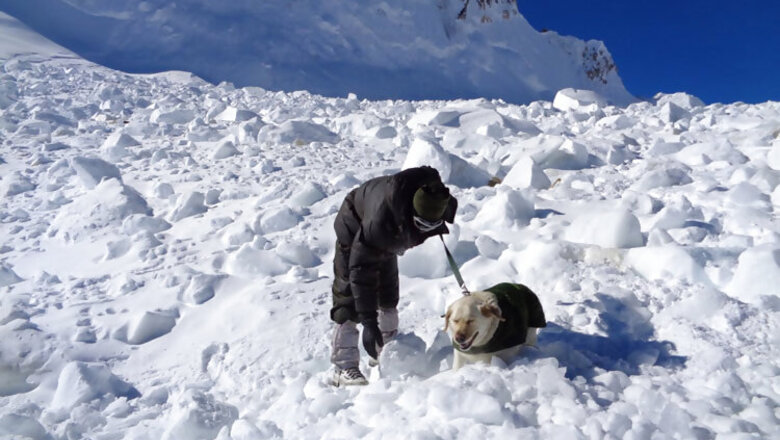
views
The miraculous rescue operation of Lance Naik Hanamanthappa Koppad from the dangerous heights of Siachen glacier once again shows the indomitable spirit of the Indian Army. A large group of soldiers trained in rescue operations along with two dogs spent more than five days at the avalanche site looking for their fellow jawans with scant regard to their own safety in the world highest battlefield where the biggest killer is not the enemy bullet but the highly dangerous and unpredictable weather and terrain.
Over 150 soldiers worked round-the-clock to carry out the rescue operations in the world's highest battlefield. Along with them, two canines - Dot and Misha - also worked in the icy heights and are credited with the miraculous rescue of Koppad from under tonnes of ice and snow at a height of almost 19,500 feet where even normal breathing is a huge task. "The dogs, Dot and Misha, did a tremendous job," the Army officials said.
On February 2, an 800 X 400 feet ice wall broke off and covered an army post in northern glacier in Siachen. The debris, including massive ice boulders, some the size of a small room, spread over 800 x 1000 metres trapping 10 soldiers of the 19th Battalion of Madras Regiment.
Specialised digging and boring equipment, like rock drills, electrical saws and earth augers were flown in. In addition, deep penetration radars, capable of detecting metallic objects and heat signatures at a depth of 20 meters, and radio signal detectors were also flown in using Indian Air Force fixed wing aircraft and Army Aviation helicopters.
Using the specialised equipment, the rescue teams were able to identify locations, where digging were carried out. However, rescue efforts were frequently hampered by high velocity winds and blizzards.
The rescue teams had the arduous task of breaking through 25-30 feet of blue ice, which is harder than concrete, and had to chip it away inch by inch. The rescue work was carried out in extreme weather conditions where average day temperature was minus 30 degrees Celsius and night temperature below minus 55 degrees.
By Monday, the rescue teams were able to reach the location of the buried habitat and Koppad was recovered alive. The bodies of nine soldiers were also extricated from their icy grave.
When rescued, Koppad was conscious but drowsy and disoriented. He was severely "dehydrated, hypothermic, hypoxic, hypoglycemic and in shock". He was immediately resuscitated by the doctors at the site, who had been there for the past 5 days in the hope of finding a survivor.
He was treated with warm intravenous fluids, humidified warm oxygen and passive external rewarming. He was later moved to the Army and Research Hospital here, they said.


















Comments
0 comment